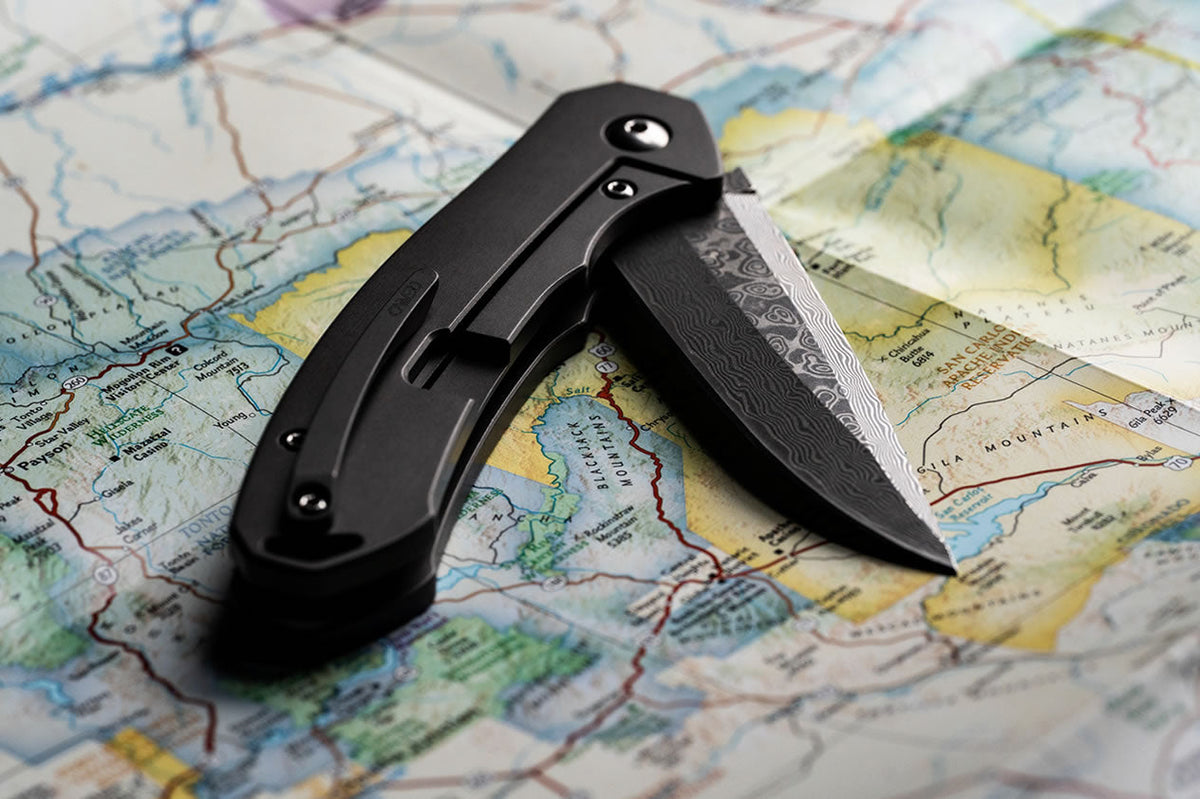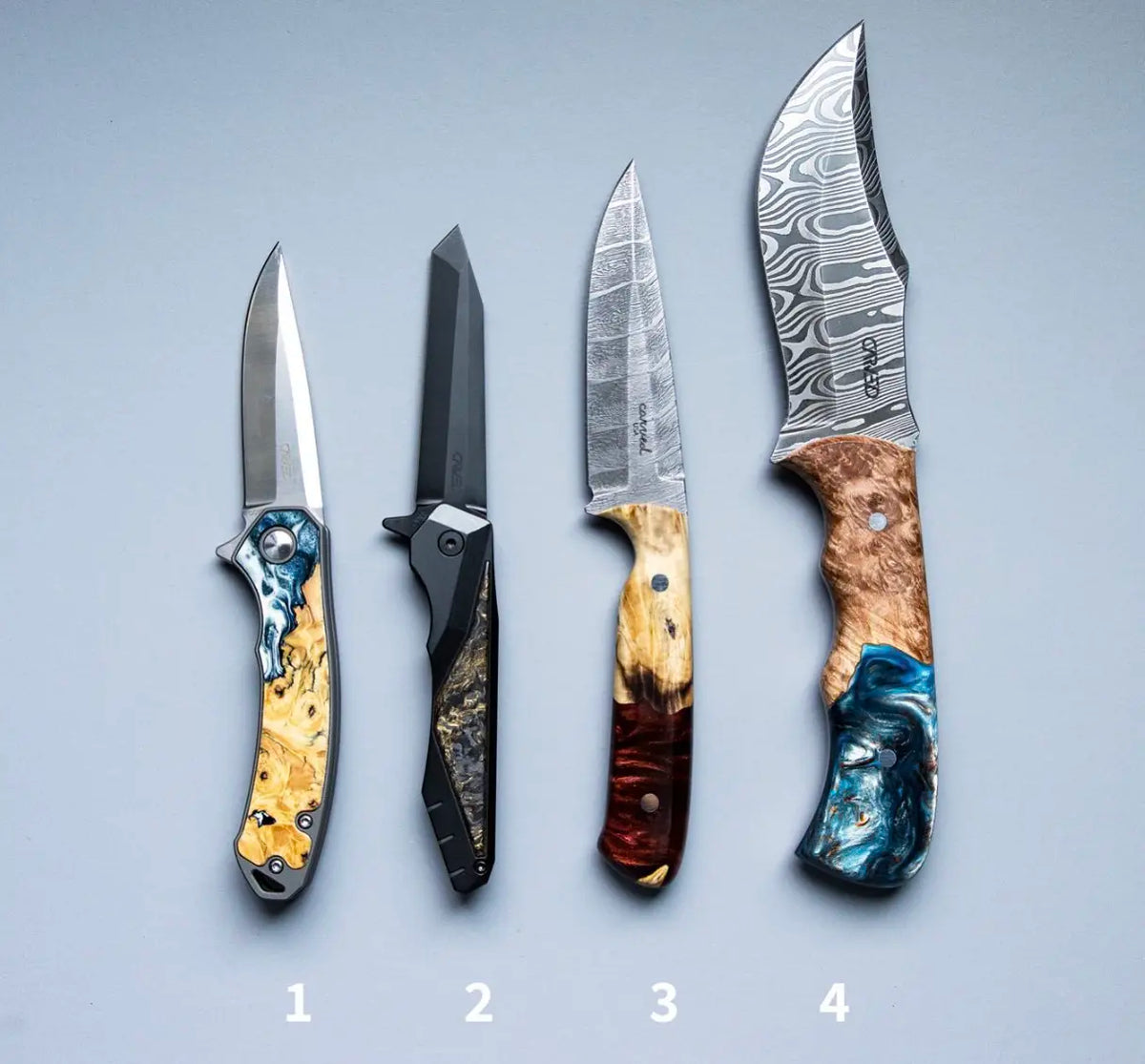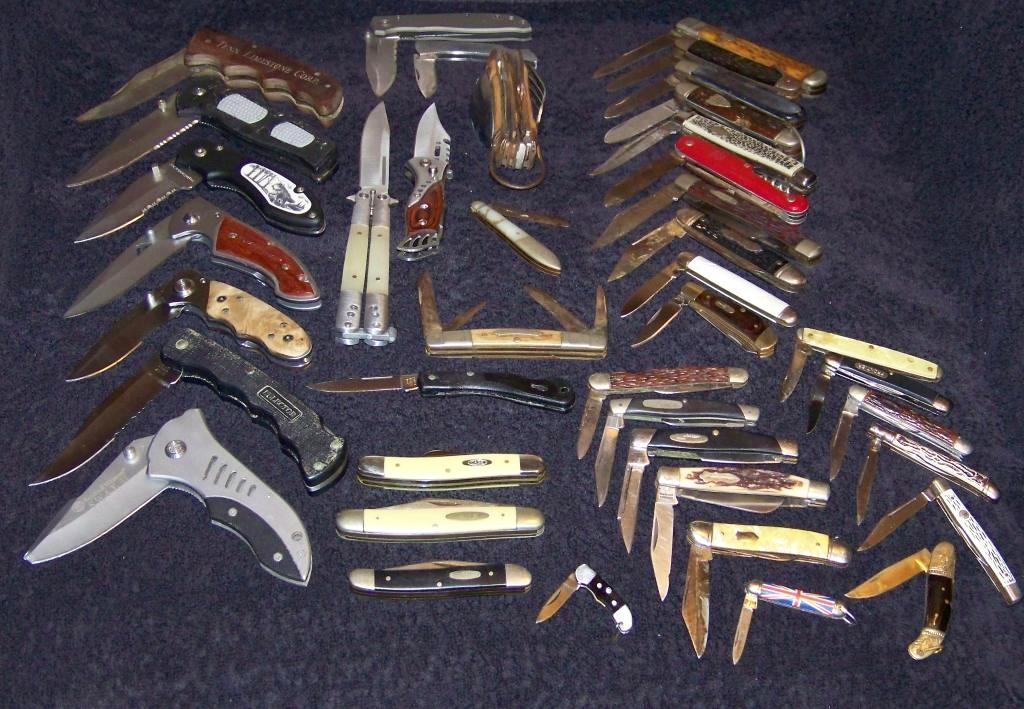A pocket knife is considered a weapon if it’s used to threaten or cause harm to others. Local laws may also define it as a weapon based on blade length or mechanism.
Pocket knives are staple tools for many, from handymen to outdoor enthusiasts. Their utility spans a wide range of activities including cutting, whittling, and even preparing food. Despite their practicality, there are circumstances in which these tools are classified as weapons.
Legality often hinges on specific criteria such as the knife’s blade length, locking mechanisms, or the way it opens. This definition can vary widely by jurisdiction, emphasizing the need for owners to be knowledgeable about local knife laws. Ensuring that the use of a pocket knife is aligned with legal guidelines is crucial for avoiding potential legal complications. Therefore, understanding the distinction between a tool and a weapon in the context of pocket knives could save one from unintended legal breaches.
Cutting Through The Definitions
Kitchen or pocket, knives often beg the question: When does a simple blade cross the line into weapon territory? Clear definitions can help distinguish an everyday tool from a perceived threat. The nuances lie in usage, intent, and the law. Phrasing like “dangerous knives” or “illegal blades” might surface in legal texts, adding layers of complexity. It’s crucial to slice through the grey areas and comprehend when a pocket knife transforms from a cutting instrument to a potential weapon.
Pocket Knife: A Tool Or A Threat?
Pocket knives slip effortlessly into daily life. They open packages, slice fruit, and perform countless small chores. These blades become indispensable for tasks requiring a sharp edge. Still, context shifts perception.
- Environment: A camping trip validates a pocket knife’s presence; a crowded venue raises brows.
- Behavior: Responsible use aligns with tool status; brandishing it at someone screams threat.
- Legislation: Laws may dictate permissible knife length and locking mechanisms.
Intent plays a pivotal role. A pocket knife in the hands of a craftsman differs from one clenched in aggression.
Weapon Classification Of Pocket Knives
Legal guidelines determine a pocket knife’s classification as a weapon. Factors influencing this status include:
| Characteristics | Tool | Weapon |
|---|---|---|
| Blade Length | Typically under a specific measurement | Usually exceeds restrictions |
| Design | Functional for everyday use | Intimidating features, aggressive styling |
| Concealment | Visible clip or pouch commonplace | Hidden carry suggests deceit |
| Use | Craft, repair, utility work | Targeted to cause harm |
Keeping these criteria in check can clarify a pocket knife’s status. It underlines the thin line separating a helpful gadget from an unlawful armament.

Credit: www.carved.com
Legal Boundaries For Blades
Understanding when a pocket knife transitions from a tool to a weapon is crucial. Laws vary greatly by location, and they dictate when you can carry a knife and what type. This section dives into specific legal boundaries that separate a utility item from a weapon.
Length Limits By Jurisdiction
Knife length is a key factor in legal classifications. Most jurisdictions have strict length limits. To stay within the law, know the maximum blade length allowed in your area.
| Location | Maximum Legal Length |
|---|---|
| New York | 4 inches |
| California | 2.5 inches |
| Texas | 5.5 inches |
Fixed Blade Vs. Folding: Legal Implications
The type of blade also affects its legal status. Fixed blades are often seen as more dangerous. Folding knives typically face fewer restrictions. Here’s a breakdown:
- Fixed blades may be banned in public places or require a sheath.
- Folding knives can be carried more freely, but with length limits.
The Thin Edge: Utility Vs. Weapon
Pocket knives serve many purposes. People use them for opening boxes, camping, and even peeling fruit. But under certain conditions, the same handy tool becomes a weapon. This transition hinges on factors like design and context. Knowing these differences helps us use pocket knives responsibly.
Design Features That Determine Use
The design of a pocket knife can hint at its intended use. For example, knives designed for utility often have features like:
- Blades under 3 inches
- Screwdrivers
- Can openers
In contrast, knives that may be seen as weapons often have:
- Longer, sharper blades
- Assisted opening mechanisms
- Features designed for combat, like tactical grips
Contextual Factors In Classification
The same pocket knife might be seen differently based on where and how it’s used. A knife in a camper’s pack is likely considered a tool. Yet, the same knife carried hidden at a public event may be a weapon. Context matters.
| Context | Classification |
|---|---|
| Outdoor Activities | Utility Tool |
| Carried Concealed Without Cause | Potential Weapon |
| Use During a Crime | Weapon |
Authorities’ Perspective
Impact Of Intent
The pocket knife – a tool found in many households and outdoor enthusiasts’ kits. Most view it as a practical item, but under certain circumstances, it becomes more than just a utility blade; it transforms into a weapon. The defining factor? Intent. Intent determines how the law views a pocket knife in any given situation.
How Intent Affects Legal Status
When a pocket knife shifts from a tool to a weapon, intent plays a pivotal role. Authorities consider how an individual plans to use the knife. Carrying a knife for daily tasks or outdoor activities typically falls under lawful possession. However, if an individual carries a knife with the intention to harm, threaten, or intimidate others, the legal status changes; the knife is now a weapon.
Case Studies: Intent Behind The Blade
- Self-Defense Scenario: A case involved an individual who used a pocket knife to fend off an attacker. The court ruled the intent as self-defense. The knife was not premeditated as a weapon.
- Planned Assault: In another case, a person carried a knife with plans to intimidate a business rival. The court found them guilty of carrying a weapon with malicious intent.
- Accidental Harm: An accidental injury caused during lawful use of a pocket knife was reviewed by authorities. No weapon charge was given because there was no harmful intent.
These cases show that context matters. The courts examine the reasons for carrying and using a pocket knife. The intention behind the blade can convert a simple tool into a weapon in the eyes of the law.

Credit: www.carved.com
Crossing Borders With Pocket Knives
Traveling with pocket knives can be tricky. Different countries have different laws. Understanding these is key to a hassle-free journey. A pocket knife is a tool until the law deems it a weapon. This changes at each border.
Traveling Internationally With Knives
Before packing a pocket knife for an international trip, research is crucial. Each country’s knife laws are unique. Some countries ban knives with blades longer than a certain length. Others prohibit locking knives or those that open with one hand.
| Country | Maximum Blade Length (cm) | Locking Mechanism Allowed? | One-handed Opening Allowed? |
|---|---|---|---|
| Canada | 6 | No | No |
| UK | 7.62 | No | No |
| Japan | 6 | No | No |
Check with embassies or government websites for specifics. Ignorance can lead to fines or confiscation.
Navigating Airport Security With A Blade
Airport security often has stringent rules for carry-on items. Knives usually can’t fly in the cabin. Checked luggage is often a safer bet for knife transport.
- Wrap your knife to prevent injuries during baggage checks.
- Declare your knife when checking in your baggage.
- Use a hard case to protect the knife and your luggage.
Remember, security always has the final say. Cooperation and transparency minimize disruptions.
Real-life Consequences
Understanding when a pocket knife crosses the line from a tool to a weapon is crucial. This shift is not only a matter of definition but carries real-life consequences. Consequences often include legal penalties and a criminal record that can shadow a person’s life. Let’s delve into what those real-life implications involve.
Offenses And Penalties Involving Pocket Knives
Carrying a pocket knife can lead to serious offenses under the law. Authorities consider intent, blade length, and local laws. Generally, larger blades signal more severe consequences. Penalties range from fines to imprisonment. Below is a breakdown of the potential outcomes.
| Offense Type | Possible Penalty |
|---|---|
| Illegal Carrying | Fines, Confiscation |
| Brandishing | Fines, Jail Time |
| Assault with a Deadly Weapon | Long Prison Sentences |
Knife Crimes: Not Just A Weapon’s Length
The law doesn’t solely focus on blade size. How someone uses the pocket knife matters. Even a small knife used in a threatening manner can bring about criminal charges. Crimes involving knives also include carrying without permission or using them in illegal activities.
- Criminal Charges can be filed regardless of knife size, if used in crime.
- Intent Matters, even a 2-inch blade can be considered a weapon.
- Consequences are Severe – reputation damage, travel restrictions, job losses.
Ultimately, a pocket knife is a tool until wielded with harmful intent. Stay informed about local knife laws to avoid unintended offenses and the stark penalties they carry.

Credit: en.wikipedia.org
Staying Sharp: Best Practices For Knife Owners
When does your trusty pocket knife transform from a tool into a weapon? The line can blur based on laws and intent.
As an owner, staying informed and responsible is crucial. Best practices ensure safety and legality. Let’s dive into key habits and knowledge every knife owner should embrace.
Recommendations For Responsible Ownership
Awareness of local laws is step one. Blade length and locking mechanisms often dictate legality.
- Keep knives clean and sharp for safe, efficient use.
- Store knives securely, out of reach from unauthorized users.
- Use a knife only for its intended purpose to avoid accidents.
- Carry a permit if required by law.
A well-maintained knife is less likely to cause unintended harm or malfunctions. Regular maintenance is part of responsible ownership.
Educational Courses And Awareness Programs
Knowledge empowers owners. Training courses teach proper use, care, and legal knowledge.
| Course Type | Benefits |
|---|---|
| Basic Handling | Learn safe opening, closing, and usage techniques. |
| Maintenance | Hands-on skills for sharpening and cleaning. |
| Legal Education | Understanding state and federal laws on knife carrying. |
Search for local workshops or online classes. Enroll and equip yourself with valuable skills and knowledge.
Frequently Asked Questions On When Is A Pocket Knife Considered A Weapon
What Classifies A Knife As A Weapon?
A knife becomes classified as a weapon if intended for use in combat or harm. Local laws may define specifics based on blade length, design, or concealment.
Is It Legal To Carry Around A Pocket Knife?
The legality of carrying a pocket knife varies by jurisdiction. Consult local laws to determine restrictions on blade length and knife type permitted for carry. Always ensure compliance with regional legislation before carrying a pocket knife.
Is A Pocket Knife A Tool Or A Weapon?
A pocket knife primarily serves as a versatile tool for everyday tasks. It can also be a weapon in self-defense scenarios.
What Qualifies A Pocket Knife?
A pocket knife is a foldable knife with a blade that fits inside the handle and is small enough to carry in a pocket.
Conclusion
Understanding the fine line between tool and weapon is crucial for pocket knife owners. Legal specifics can vary by location and context. Always stay informed on laws and carry responsibly. A pocket knife crosses into weapon territory when used with intent to harm.
Stay safe and knowledgeable.